 Canada Health and Safety
Canada Health and Safety
Canada has some of the best health and safety laws in the world, and businesses need to be aware of these laws in order to keep their workers safe. Here are some of the most important Canadian health and safety laws that businesses need to be aware of.
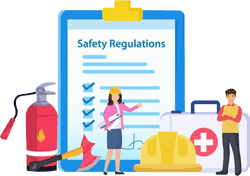 Workplace Hazardous Materials Information System (WHMIS)
Workplace Hazardous Materials Information System (WHMIS)
The Workplace Hazardous Materials Information System (WHMIS) is a federal safety program in Canada that sets safety standards for the handling and use of hazardous materials in the workplace. Businesses that handle, store, or use hazardous materials must comply with WHMIS requirements.
 Employee Health and Safety Certification Programs
Employee Health and Safety Certification Programs
Each province of Canada has its own health and safety certification program for workers. These programs require businesses to hire qualified workers and ensure they are properly protected from hazardous chemicals.
Workplace hazards
Workplace hazards can include hazardous materials, dangerous equipment, and a lack of safety precautions. These hazards can cause serious injuries and death in the workplace.
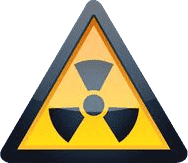 Hazardous materials
Hazardous materials
Hazardous materials can include chemicals, biologicals, and radioactive material. They can be very dangerous if mishandled or used incorrectly.
 Dangerous equipment
Dangerous equipment
Dangerous equipment includes machines that are unsafe to operate or workaround. These machines may cause injury if operated improperly or without safety precautions
 Workplace injury and illness prevention
Workplace injury and illness prevention
Preventing workplace injuries and illness is essential to safety in the workplace. The best way to do this is through health and safety certification programs and safe work practices.

Workplace safety
Workplace safety includes ensuring that all equipment and materials are safe and properly used. It also includes training employees about safe work practices and how to prevent injuries in the workplace.
 Impairment and cannabis in the workplace
Impairment and cannabis in the workplace
There is no definitive answer as to whether cannabis use can impair an employee’s ability to safely perform his or her duties. However, research suggests that cannabis can affect task-related and psychomotor performance and attention span. Employers must assess the safety of their employees when considering a policy prohibiting marijuana use in the workplace.
Program Requirements
 Cor and Se-Cor certification programs in each province offer qualified workers the proper training and protection from hazardous chemicals and hazardous tasks in the workplace. Calibre Business Solutions Inc. offers Cor and Se-Cor certifications across Canada
Cor and Se-Cor certification programs in each province offer qualified workers the proper training and protection from hazardous chemicals and hazardous tasks in the workplace. Calibre Business Solutions Inc. offers Cor and Se-Cor certifications across Canada
Cor Certification
Se-Cor Certification
Programs must meet certain program requirements, including an audit on the program before it is implemented, passing an exam, and compliance with safety regulations. Calibre Business Solutions Inc. offers Cor and Se-Cor Certification across Canada.
Cor Certification: The certificate recognizes the company and allows it to join safety incentive programs such as partners in injury reduction. This will get you a rebate on your worker’s compensation rates in most provinces.
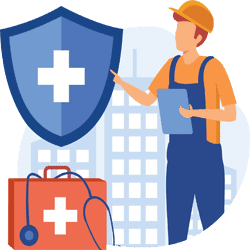
Occupational Health and Safety
The health and safety of employees are a top priority for employers. Health and safety include both the physical and mental health of employees. It also covers the prevention of injuries in the workplace, including those caused by hazardous materials and unsafe work practices.
Program Requirements
Cor and Se-Cor certification programs must meet certain program requirements, including an audit on the program before it is implemented, passing an exam, compliance with safety regulations, and meeting company standards Cor Certification: The certificate recognizes the company and allows it to join safety incentive programs Se-Cor Certification: The certificate recognizes the company and allows it to join safety incentive programs.

Hazard Investigation
An investigation into a workplace health and safety incident can help to prevent future incidents. A hazardous materials response team is often called in to investigate workplace accidents and emergencies involving hazardous materials. The company has a person who is trained in the incident investigation in order to meet the Cor and Se-Cor Standards. The normal course for this is principles of health and safety management or PHSM for short.

Measurement and Calculation of Exposure
The measurement and calculation of exposure can be used to determine the health and safety risks associated with workplace hazards. Health and safety professionals use health physics principles to measure worker exposure to hazardous materials, workplace noise levels, and other environmental factors. Health and safety professionals can use health physics to calculate the degree of hazard.
Occupational Health and Safety Code
Health and safety code applies to all employers in Canada, no matter what industry they are in. It covers a wide range of topics, from workplace health and safety to occupational health and safety. Health and Safety Acts deal with different aspects of health and safety, including:
-exposure limits for harmful chemicals
-exposure limits for sound and duration of that sound

Reduction of Sound Exposure
Sound can be a major health and safety hazard. The Health and Safety Code sets exposure limits for sound levels in workplaces. Employers must ensure that no worker is exposed to noise levels that are too loud.
Health and Safety at Work Regulations
The Health and Safety at Work Regulations set workplace health and safety standards for many different types of workers, including:
-workers who use power tools
-workers who do the heavy lifting
-workers who work at heights over 3 meters
Who enforces the Canada Labor Code and its regulations?
There are three main enforcement agencies in Canada:
-Occupational health and safety ( Work Safe ) Provincially operated
-the Quebec Workplace Safety and Insurance Board (QWSIB)
– Employment and Social Development Canada (ESDC).
Emergency Procedures and Equipment
In the event of an emergency, workers should follow safety procedures and wear appropriate protective clothing and equipment. Health and Safety at Work Regulations require employers to provide workers with proper safety gear, including:
-helmet
-suitable gloves
-eye protection
-a face mask
-protective clothes
Fall Protection
Workers should be protected from falls by using fall protection equipment, such as:
-a safety net
-a safety rail
-an adjustable work platform
-workers also need to be trained in the use of fall protection equipment.
-a rescue plan must be current and signed off by all affected workers working on the site.

Instruction and Training
Employers must provide workers with instruction and training in the safe use of equipment and supplies. Health and Safety at Work Regulations require employers to:
-provide workers with health and safety information
-give them the opportunity to ask questions
-teach them how work is done safely
-employers must either set up an in-house training program or outsource the training to a competent supplier who supplies tickets to workers on completion of the training.
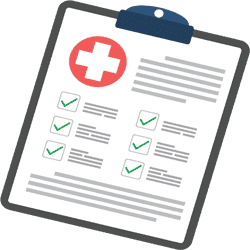
Records
Employers must keep records of health and safety incidents and train for at least three years. Health and Safety at Work Regulations also require employers to:
-provide workers with a copy of the health and safety program
-make copies of all safety information available to workers
-keep a register documenting workplace injuries, illnesses, fatalities, and training.
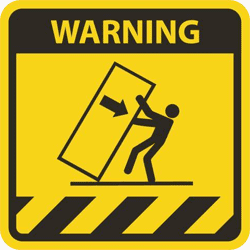
General Requirements for Machine Guards
Machines and equipment can pose a serious danger to workers if they are not properly guarded. Health and Safety at Work Regulations require employers to:
-install guards on machines that could injure or trap workers
-provide training in the use of machine guards. machines shall be taken out of service should any of the guards be missing or not working properly.
-always follow manufacturers’ recommendations regarding PPE to be worn when using machines and the guards that should be in place.

Defective Tools and Machines
If a machine or tool is defective, it can cause serious injury to workers. Health and Safety at Work Regulations require employers to:
-inspect machines and tools before they are used
-place the machine or tool out of service until it has been repaired by a qualified repair person.
-take any necessary safety measures if defects are found
-report any defective equipment or tools as soon as possible to the health and safety officer of the workplace.
What are the most common hazards in the construction industry?
-Injuries from lifts and ladders
– Falls from a height
– Electrical shock
– Inadequate safety equipment

What is an electrical safety program, and how does it work?
Electrical safety programs are designed to prevent workplace injuries and fatalities caused by exposure to electrical hazards. Health and Safety at Work Regulations require employers to:
-have an electrical safety program in place
-provide workers with copies of the program
-keep a register documenting workplace injuries, illnesses, fatalities, and training relating to work with electricity.
Who should be involved in an electrical safety program for a company’s employees, supervisors, managers, and owners/managers of facilities such as warehouses or factories
The electrical safety program should be designed and implemented by a qualified supervisor. Other employees who may have access to, or need to work with, electricity should be educated about the hazards of working with electricity and receive training in accordance with the electrical safety program. Owners and managers of facilities where workers are exposed to potential electrocution hazards should also be trained in accordance with the program. What are some common hazards of working with electricity and how can they be prevented?
-Working near electrical equipment that’s not properly grounded
– Working near high-voltage lines
– Touching or coming into contact with energized wires
– Improper use of tools involving electricity

Are there any OSHA-approved training courses available to help employees learn about hazardous materials and their potential health effects?
There are no specific OSHA-approved training courses for employees who work with hazardous materials, but general safety and health training that covers workplace hazards and precautions can be useful. Having a list of the safe work practices and procedures and working with an experienced mentor for the first few weeks of employment reduces the chance of injury by a lot.




